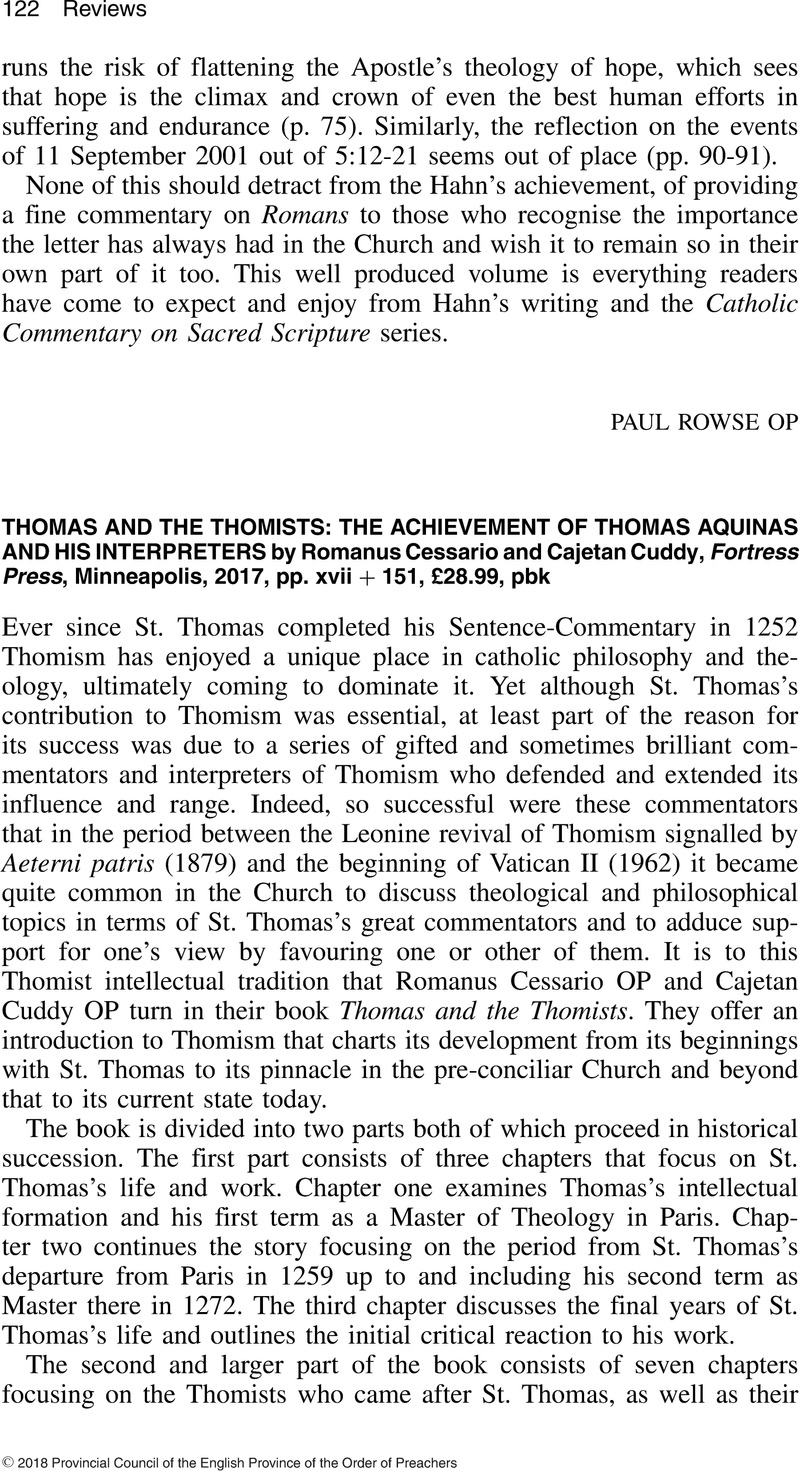No CrossRef data available.
Article contents
Thomas and the Thomists: The Achievement of Thomas Aquinas and His Interpreters by Romanus Cessario and Cajetan Cuddy, Fortress Press, Minneapolis, 2017, pp. xvii + 151, £28.99, pbk
Review products
Thomas and the Thomists: The Achievement of Thomas Aquinas and His Interpreters by Romanus Cessario and Cajetan Cuddy, Fortress Press, Minneapolis, 2017, pp. xvii + 151, £28.99, pbk
Published online by Cambridge University Press: 01 January 2024
Abstract
An abstract is not available for this content so a preview has been provided. Please use the Get access link above for information on how to access this content.

- Type
- Reviews
- Information
- Copyright
- Copyright © 2018 Provincial Council of the English Province of the Order of Preachers


